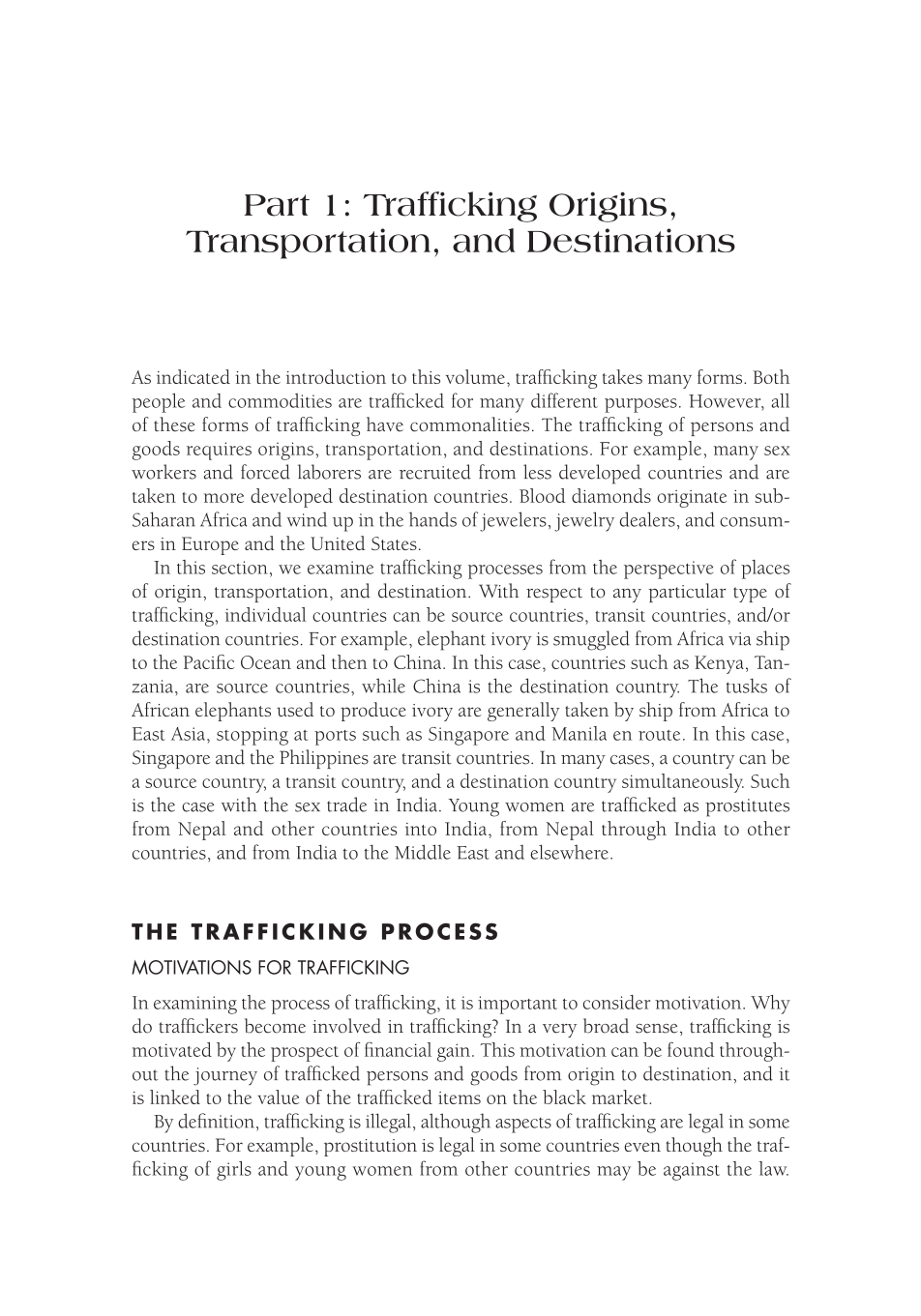Part 1: Trafficking Origins,
Transportation, and Destinations
As indicated in the introduction to this volume, trafficking takes many forms. Both
people and commodities are trafficked for many different purposes. However, all
of these forms of trafficking have commonalities. The trafficking of persons and
goods requires origins, transportation, and destinations. For example, many sex
workers and forced laborers are recruited from less developed countries and are
taken to more developed destination countries. Blood diamonds originate in sub-
Saharan Africa and wind up in the hands of jewelers, jewelry dealers, and consum-
ers in Europe and the United States.
In this section, we examine trafficking processes from the perspective of places
of origin, transportation, and destination. With respect to any partic u lar type of
trafficking, individual countries can be source countries, transit countries, and/or
destination countries. For example, elephant ivory is smuggled from Africa via ship
to the Pacific Ocean and then to China. In this case, countries such as Kenya, Tan-
zania, are source countries, while China is the destination country. The tusks of
African elephants used to produce ivory are generally taken by ship from Africa to
East Asia, stopping at ports such as Singapore and Manila en route. In this case,
Singapore and the Philippines are transit countries. In many cases, a country can be
a source country, a transit country, and a destination country simul ta neously. Such
is the case with the sex trade in India. Young women are trafficked as prostitutes
from Nepal and other countries into India, from Nepal through India to other
countries, and from India to the Middle East and elsewhere.
THE TRAFFICKING PROCESS
MOTIVATIONS FOR TRAFFICKING
In examining the process of trafficking, it is important to consider motivation. Why
do traffickers become involved in trafficking? In a very broad sense, trafficking is
motivated by the prospect of financial gain. This motivation can be found through-
out the journey of trafficked persons and goods from origin to destination, and it
is linked to the value of the trafficked items on the black market.
By definition, trafficking is illegal, although aspects of trafficking are legal in some
countries. For example, prostitution is legal in some countries even though the traf-
ficking of girls and young women from other countries may be against the law.

































































































































































































































































































































































































